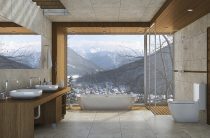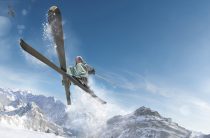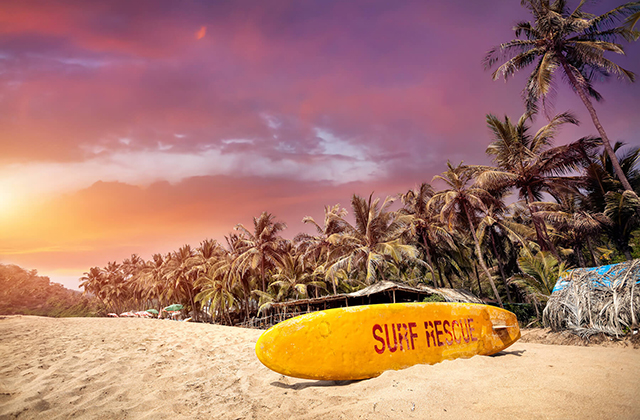Whether you’re looking to buy or rent/demo skis the following may be helpful information how to select the best skis for you. Valentines Day is a good time to visit big white Canada for a date skiing.
First you must decide what is best for you, to rent/demo (renting top of the line models, not rental stock skis) or buy? Beginning skiers or those just trying out the sport to decide if it’s for them, it makes sense to rent ski equipment. Once sure you’re going to spend enough time on the slopes to justify buying ski equipment you can invest in your own ski gear. Considering today’s economy and the cost to ship or fly with your equipment you may just want to rent/demo till things improve and our economy improves. You can demo top of the line skis for what it would cost you to fly round trip with you equipment- you may want to consider carrying-on your own boots.
What is the Best Ski for You? With a numerous skis to be had on today’s market, choosing can be overpowering. Deciding what skis will cater to your ability level, gender and your goals can be difficult. You must consider the ski conditions you will ski the most, your honest ability level, your terrain preference and type of skiing (racing, downhill, or off piste, for example), and how much experience you have – number of days, years on skis -when choosing skis. With honest answers to these questions you can start generating a list of what skis may be right for you.
Advanced technology in ski construction has allowed downhill ski manufacturers to make excellent skis for various skiers and conditions but understanding the different ski categories is essential. When potential buyers ask for suggestions, many skiers or shop personnel will recommend their personal favorites. What ski works for them may not necessarily work for you but interpreting your friend’s descriptions can be useful in helping you find the best ski for your unique needs.
Today the most popular terms I like to use in categorizing different types of skis are:
Technical, racing or carving skis are for skiers who engage primarily in technical carving on hard or groomed snow and skiers honing basic technical skills. These include all racing and race carving skis, cross skis and recreational carvers. This is the choice of many teaching pros and advanced expert skiers. Typical waist measurement is 71mm or less. Turn radii are typically 15 meters or less depending on length skied. Typically these type skis are skied short.
Tactical, multi-condition, aggressive all mountain, good everyday skis for skiers for whom the relationship of the ski to the snow is of paramount importance. These skiers roam the entire mountain, or at the other end of the spectrum, simply cruise around the groomed on flat edges. These types of skis are the most popular with wide-ranging selection to choose from. Waists are generally in the 68 to 82mm range, with a turn radius from approximately 15 meters to 19 meters
Freeride Skis are for those who enjoy the freedom of the backcountry. If you want a ski that can take you into the backcountry as well as the rest of the mountain this is the one current label that seems to work for everyone. Many do have twin tips and many can do double duty as deep snow skis and park/pipe skis. Still, in my view these wide skis focus on deep snow and crud expertise. Formerly called deep snow, or powder, or “big mountain” skis. Waist range from low 80’s to over 100 mm under foot with a turn radius from 15 up to 35 meters.
Specialty Skis – everything else, especially twin tip skis that fare best in park and pipe conditions and mogul skis. Most shops concentrate on more mainstream models and it’s been my experience that dedicated slope-siders and committed bumpers rely not on reviews but on peer-to-peer communication and coaches’ recommendations.
Hopefully you now have a reasonable working knowledge of types of skis and the criteria to determine what is suitable for your type of skiing it’s to time to put the info to use and head to the shop.
No matter whether you are renting, demoing or buying you need to find a shop that has knowledgeable technicians to assist you in your needs. You will find it hard to talk to a person that only has snowboard background to buy or rent skis and visa-versa. Experience of shop personnel not only in sales but in local knowledge of the area you are skiing will make the process easier.
More guests may be renting/demoing equipment this winter than ever before. Airline bag fees have sky rocketed with the increases of fuel prices and other airline problems. Along with baggage fees guests are trending to give up buying, lugging equipment through airports and taking the chance their gear will be at their destination. Under these circumstances shops need first-rate, well tuned equipment for our specialized guests. In the past shop have only provided rental performance skis and boots now have to provide better equipment.
It is common for shoppers to check out the stores and then go on line to look for cheaper prices. There are a growing number of web sites where new and older model skis are for sale at prices that can vary across the Internet. A lot of the difference in prices is due to the popularity of certain model skis that are designed for specific snow conditions. I only recommend buying online if you have already tested and know exactly the ski you want. You may find it difficult to find this year’s current gear on line till after Christmas or cheaper than the minimum advertised price determined by the manufacturer. Give your local merchants the business you may be surprised what deals are out there.
Don Jewkes, is a 32-year certified PSIA-RM level 3 Pro for the Ski and Snowboard Schools of Aspen at Snowmass, local resident and owner of Sunset Ski Repair. Drop him a line at donjewkes@comcast.net. Visit his website http://www.sunsetski.com.
Article Source: http://EzineArticles.com/expert/Don_Jewkes/404211
Article Source: http://EzineArticles.com/2813524


